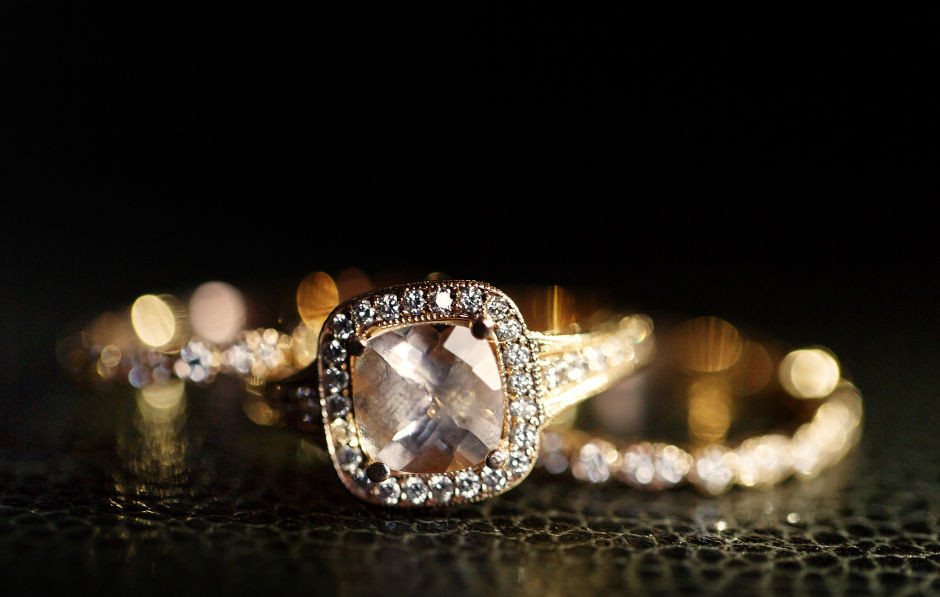
A girl’s best friend since 1949, diamonds are the birthstone for April. Here, we shine a light on antique diamond jewellery and tell you everything you need to know.
We were first told that ‘Diamonds are a girl’s best friend’ in the late 1940s Broadway production of Gentlemen Prefer Blondes and, for those born in April, that is still true today. This month our experts at Hemswell Antique Centres are shining a spotlight on the birthstone for April, the diamond, and will tell you what to look for when buying them and how to take care of them.
Where are diamonds found?
Diamonds are found in 35+ countries worldwide but the acknowledged top producers are Russia, Canada, Botswana, Angola, and South Africa.
What is a diamond?
Today, diamonds are referred to in a variety of ways, depending on their method of production, and are known variously as mined diamonds, lab grown diamonds, moissanite diamonds, simulated diamonds and even blood diamonds. But what do all these terms means and are they all ‘real’ diamonds?
Mined diamonds
A mined diamond is one that has formed over millions, if not billions of years, that has to be extracted from deep in the earth through mining. When people talk about ‘real’ diamonds they are often referring to the natural, mined stones.
Blood diamonds
Also known as conflict diamonds, these are stones originating in a war zone and the money from them is used to finance an uprising. The United Nations definition says they are “any diamond that is mined in areas controlled by forces opposed to the legitimate, internationally recognized government of a country and that is sold to fund military action against that government.”
Moissanite diamonds
Contrary to popular belief, moissanite is not manmade but is in fact a natural mineral of silicon carbide first discovered inside a meteorite at the end of the 19th century. However, as it is incredibly rare in its natural state, moissanite is today created or ‘grown’ almost exclusively in laboratories.
Lab grown diamonds and simulated diamonds
Lab grown diamonds are created using the same process as mined diamonds but in a fraction of the time. They are indistinguishable from mined diamonds without specialist equipment and have no physical differences. Simulated diamonds are synthetic stones that are lab produced which vary in their composition to mined diamonds. Cubic zirconia is a popular diamond simulant.
How to buy diamond jewellery
When considering a diamond birthstone, you should always take into account the four Cs against which diamond quality is measured. These are:
Cut – considered the most important factor in a diamond’s quality, the cut can make a diamond seem brighter and even bigger, and will minimise imperfections. It determines how much sparkle the stone has and the most common cut is the round brilliant cut.
Colour – this is in fact determined by the absence of colour, with the best stones considered to be completely colourless. Graded D to Z, with D being the finest and Z having a visible yellow-brown hue.
Clarity – inclusions in a mined diamond are the flaws or imperfections that occur naturally within the stone as it forms. These blemishes can be made of trapped materials including water and minerals. The higher the clarity, the fewer inclusions there are that are visible to the naked eye. Clarity is graded using letters and/or numbers. FL is flawless and I3 indicates there are several inclusions. When looking for eye-clean stones, anything between VS2 (very slightly included) to SI1 (slightly included) is recommended.
Carat – the carat size of a diamond is a measure of its weight. The bigger the carat weight, generally the larger the stone is and therefore the higher its value. Bear in mind here, however, that the cut of a stone and its shape, can affect its appearance. It is accepted that one carat is equivalent to 0.20g.
The meaning of the diamond birthstone
As the hardest known substance on earth, diamonds are a symbol of longevity and long lasting, strong relationships. They have long been associated with love, social status and financial wealth and are named after the Greek for invincible. The most popular stone for engagement rings, diamonds are said to bring the wearer balance and clarity.
How to clean diamond jewellery
Diamonds can only be scratched by other diamonds so are perfectly suitable for everyday wear. They are easy to clean – simply make up a soap solution (such as dishwashing liquid) in warm water and soak the piece for half an hour. Scrub particularly dirty pieces with a soft toothbrush before rinsing well. Finish by drying and buffing with a soft, lint-free cloth.
Real diamond jewellery from Hemswell Antique Centres
Whether you are celebrating an April birthday, engagement ring shopping, or you just want to treat yourself to a piece of antique diamond jewellery, a trip to Hemswell Antique Centres is a must. With almost 300 pieces of unique diamond jewellery online, including art deco diamond jewellery, plus thousands more pieces across our four buildings, you will be spoilt for choice.